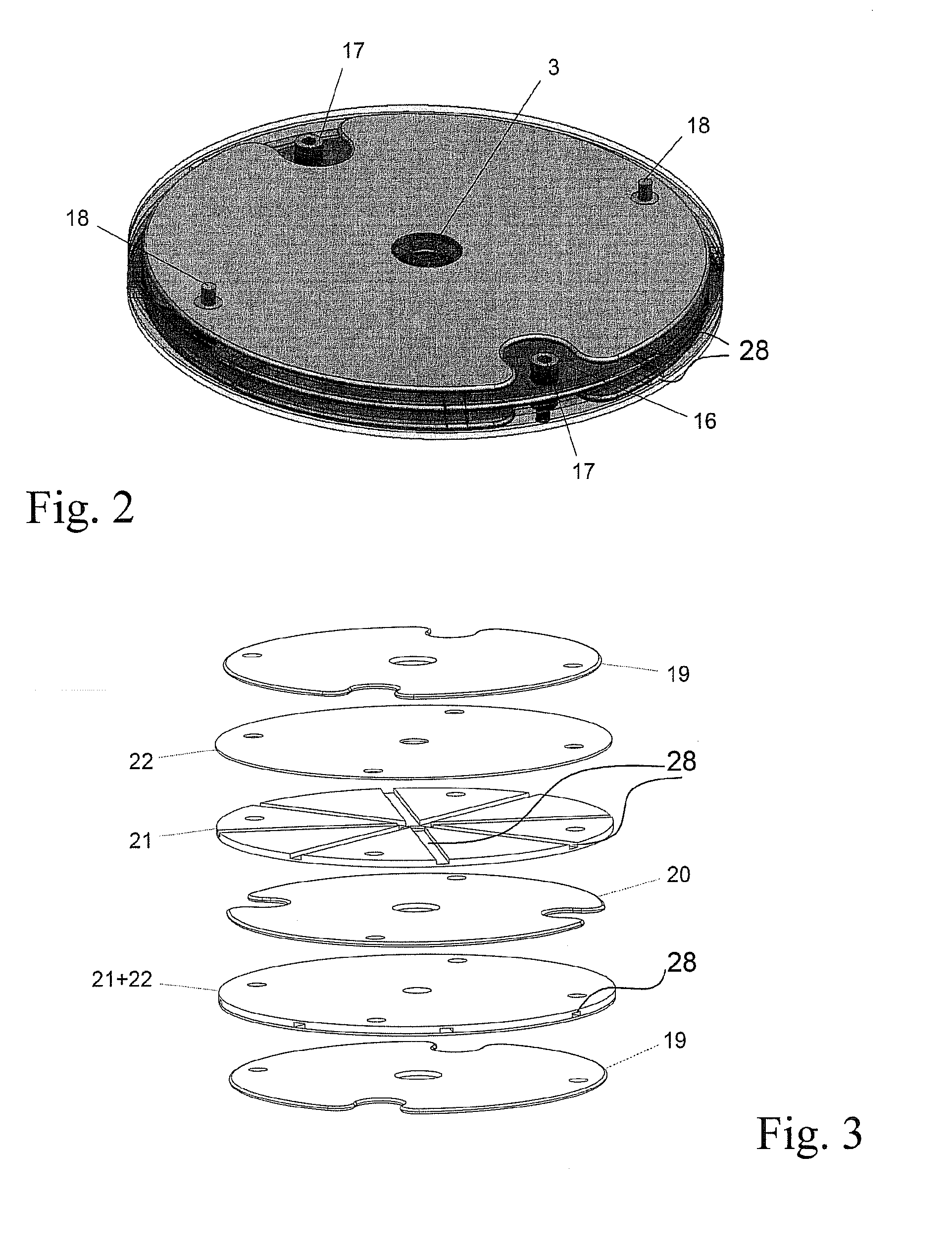Remote non-thermal atmospheric plasma treatment of temperature sensitive particulate materials and apparatus therefore
a technology of temperature sensitive particulate materials and plasma treatment, which is applied in the direction of plasma technique, molten spray coating, coating, etc., can solve the problems of inability to achieve uniform surface treatment, undesired particle deposition and filamentary discharge inhomogeneous surface treatment, and powder conveying without elaborate dispersion systems additionally endanger homogeneous particle treatmen
- Summary
- Abstract
- Description
- Claims
- Application Information
AI Technical Summary
Problems solved by technology
Method used
Image
Examples
Embodiment Construction
[0001]The present invention relates to a continuous process for surface modification by remote plasma processing of temperature sensitive particulate material at atmospheric pressure using a non-thermal discharge plasma. It furthermore relates to a device for carrying out such a process.
BACKGROUND AND STATE OF THE ART
[0002]Most of the applied plasma processes for surface modification and layer deposition still suffer severe constrains as the need for low pressure environment and the difficulty for easy scale-up rules that hinder their full deployment in industry. For this reason, researchers turned towards the restriction of applied plasma processes to low pressure in the early 90's by choosing the old-fashioned silent discharge, today mostly referred to as barrier discharge (BD). This non-thermal atmospheric pressure discharge was firstly applied by Siemens in his ozonizer in 1857. In recent years, this discharge type among others gained more and more attention due to the prospect ...
PUM
| Property | Measurement | Unit |
|---|---|---|
| mean velocity | aaaaa | aaaaa |
| mean operating pressure | aaaaa | aaaaa |
| mean velocity | aaaaa | aaaaa |
Abstract
Description
Claims
Application Information
 Login to View More
Login to View More - R&D
- Intellectual Property
- Life Sciences
- Materials
- Tech Scout
- Unparalleled Data Quality
- Higher Quality Content
- 60% Fewer Hallucinations
Browse by: Latest US Patents, China's latest patents, Technical Efficacy Thesaurus, Application Domain, Technology Topic, Popular Technical Reports.
© 2025 PatSnap. All rights reserved.Legal|Privacy policy|Modern Slavery Act Transparency Statement|Sitemap|About US| Contact US: help@patsnap.com



